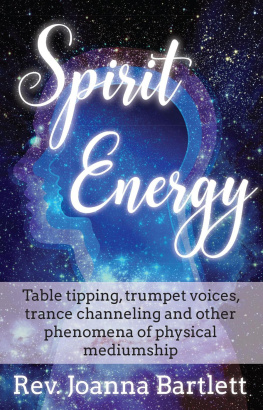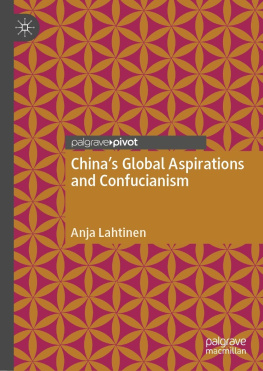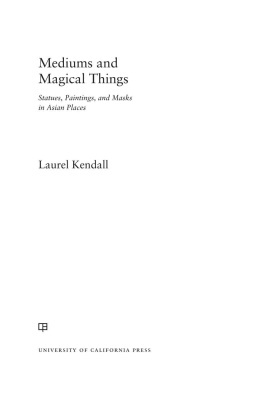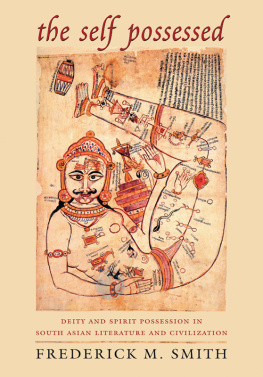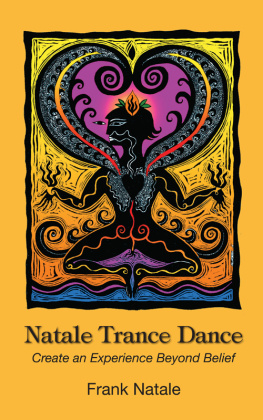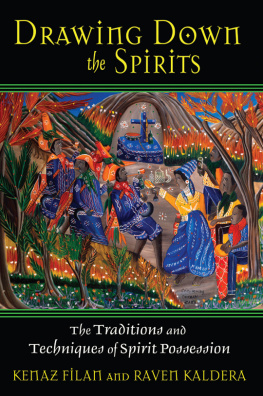

Copyright 2015 Fordham University Press
All rights reserved. No part of this publication may be reproduced, stored in a retrieval system, or transmitted in any form or by any meanselectronic, mechanical, photocopy, recording, or any otherexcept for brief quotations in printed reviews, without the prior permission of the publisher.
Fordham University Press has no responsibility for the persistence or accuracy of URLs for external or third-party Internet websites referred to in this publication and does not guarantee that any content on such websites is, or will remain, accurate or appropriate.
Visit us online at www.fordhampress.com
Fordham University Press also publishes its books in a variety of electronic formats. Some content that appears in print may not be available in electronic books.
Library of Congress Cataloging-in-Publication Data
Trance mediums and new media : spirit possession in the age of technical reproduction / edited by Heike Behrend, Anja Dreschke, and Martin Zillinger.First edition.
pages cm
Includes bibliographical references and index.
ISBN 978-0-8232-5380-7 (cloth : alk. paper)
ISBN 978-0-8232-5381-4 (pbk. : alk. paper)
1. Channeling (Spiritualism)Congresses. 2. Mass media
and anthropologyCongresses.
3. TechnologyCongresses.
4. GlobalizationCongresses. I. Behrend, Heike, editor
of compilation.
BF1286.T73 2014
133.91dc23
2013044139
CONTENTS
HEIKE BEHREND AND MARTIN ZILLINGER
ROSALIND C. MORRIS
ERHARD SCHTTPELZ
MARTIN ZILLINGER
GERTRUD HWELMEIER
LAUREL KENDALL
EMILIO SPADOLA
CHRISTOPHER PINNEY
LIDIA GUZY
DOROTHEA E. SCHULZ
HEIKE BEHREND
CLAUDIA BHME
ANJA DRESCHKE
UTE HOLL
ILLUSTRATIONS
ACKNOWLEDGMENTS
This volume grew out of two conferences exploring the manifold relationships between trance mediums and new technical media. The first took place in July 2008 in Siegen, Germany, and focused on the relationship in debates about modernity and modernization around 1900 between trance mediums and what was then the new analogue media. (See Hahn and Schttpelz 2009.) The second conference, which took place one year later, in June 2009, in Cologne, extended the topic to the present and discussed new ethnographic studies that have emerged in the field of media anthropology. This volume presents the contributions of the second conference.
We would like to express our gratitude to the contributors for sharing their ideas, as well as to Maria Jos Alves de Abreu, Johannes Harnischfeger, and Tobias Wendl, who presented inspiring papers at the conference. We are grateful to Cora Bender for joining the conference and providing thoughtful comments on the topic as a discussant. And in particular, we thank Erhard Schttpelz for his characteristically generous support for this project, which has been his initiative as much as ours from the start.
We would like to thank the Academy of Media Arts Cologne, the Institute for African Studies at the University of Cologne, and the Institute for Media Studies at the University of Siegen for supporting this conference. Together with the research initiative Cultural Theory and Theory of the Political Imaginary at the University of Constance, the German Research Foundation provided the financial means for convening the conference as part of the research project Trance Mediums and New Media at two Threshold of Globalization (1900 and Today). We would like to thank both institutions for their generous support. At the University of Constance, we wish particularly to thank Albrecht Koschorke and Alexander Schmitz for their helpful cooperation. We are allso indebted to the former Collaborative Research Center Media Upheavals at the University of Siegen for supporting the publication of the conference.
We are especially grateful to Mohamed Amjahid and Jiannis Giatagantzidis for helping to organize the event, to Sonja Schpfel and David Sittler for their thoughtful and thorough assistance in the editing process of this book, and to David in particular for the creation of the index. In addition, we would like to thank Tom Lay and Helen Tartar of Fordham University Press for their nearly unending patience and for the kind and professional assistance we were given. And last but not least, we thank the two anonymous reviewers whose critical comments enabled us to improve this volume.

Introduction: Trance Mediums and New Media
Heike Behrend and Martin Zillinger
For more than two decades, scholars have discussed the return of the religious, a development that has taken place on a global level and that deeply questions the narratives of modernity and its disenchantment (De Vries and Weber 2001). Responding to the forces of globalization, the neoliberal elimination of restraints on market forces, the decline of states, and the rise of new media, political theologies have emerged that intensely counter the Western idea of the separation of church and state and the concept of religion as a private individual matter.
The return of the religious opened up an intense debate among academics of different disciplines, including philosophy, religious studies, anthropology, and political science, about the quality and substance of religion, its mediation in new technical media, and the experiences of alterity induced through new media in the context of the processes of globalization. At the same time, new light has been shed on media and mediation by dealing with religion as media (Meyer 2009; Stolow 2005). By introducing religion into the study of media and media into the study of religion, mediation comes into focus as process and form of making meaning (Morgan 2008) and therefore deepens our insight into the configuration of media as media practices (Klassen 2008), drawing from and developing further ethnographic inquiries into situated media use. (See Spitulnik 2002.)
What has been largely neglected in the debates about the return of the religious, however, is the orgiastic or enthusiastic quality that characterizes many of its practices. The use of mediumship, techniques of trance and possession, exorcism, and the invocation of spirits and otherworldly beings flourish not only among new religious movements, but also among the old monotheistic religions that center on the book. (See, for example, Behrend 2011, Bilu 2003, and Boissevain 2006.) Although in 1972, Pope Paul VI removed the authority to perform exorcism as one of the standard minor orders with which all priests were endowed at ordination, in 1999, a revised rite of exorcism was formulated, and in 2005, Pope Benedict XVI declared that every diocese should appoint an exorcist. At the same time, a pontifical university in Rome instituted a training course for exorcists that has been conducted annually (Csordas 2012). Likewise, Islamic reform movements try to promote Quranic healing practices to counter the trance elements of Sufi practices, while public performances of spirit mediumship and divination in ultraorthodox Jewish communities strive to provide an all-embracing metaphysical account of extraordinary phenomena in the borderland of scientific inquiry. By putting divination performances of autistic children publicly to test, they rearticulate traditional forms of dybbuk possession in a modernist idiom (Bilu and Goodman 1997).






